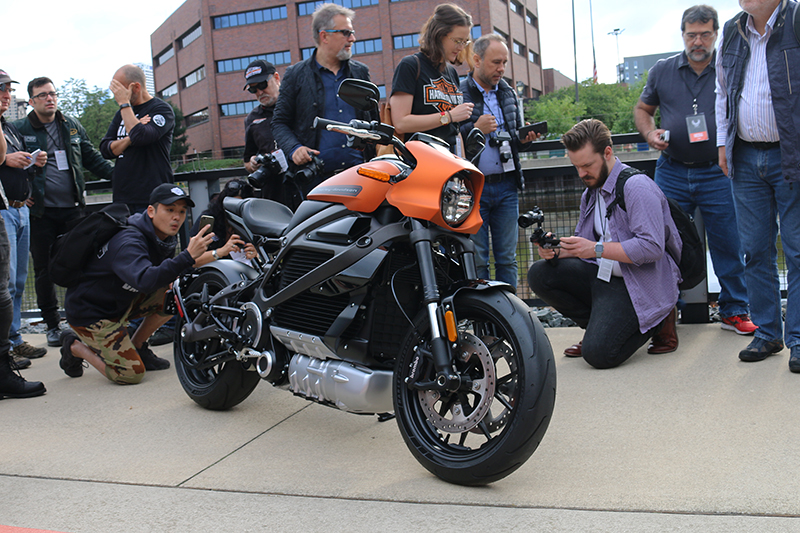
Ten years ago if you’d have said Harley-Davidson would be one of the first major manufacturers to launch an electric motorcycle, people would have laughed. But lo and behold, the 2019 LiveWire was unveiled to the public at Harley’s 115th anniversary celebration in Milwaukee. We also got more details on some of the new and updated models and technology reported previously, including the new FXDR 114, the overhauled Trike family, a fresh crop of premium CVO models and an upgraded infotainment system.
Read our 2019 Harley-Davidson FXDR 114 first ride review
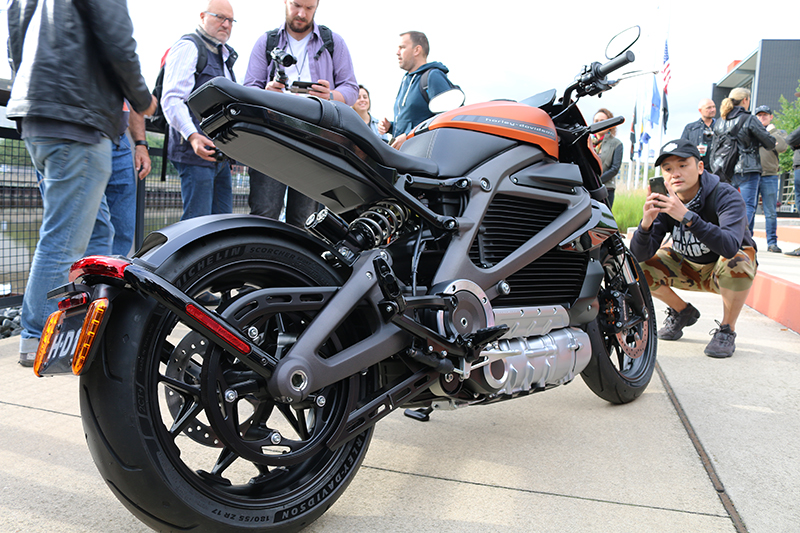
While media were privy to a walkaround of the LiveWire electric motorcycle at a special preview in Milwaukee, Harley remained tight-lipped about its specifications. But that doesn’t mean we didn’t get a few nuggets of information from The Motor Company, which claims that the LiveWire’s performance will overshadow its forebear, Project LiveWire, in almost every measurable aspect. Plus, H-D plans on launching up to five more EVs by 2022. And while many speculated Harley’s electric bike would be developed with help from Alta Motors after it made an equity investment into the company back in March, that’s not the case.
Read about Harley-Davidson’s future models and strategies for 2019 and beyond
“We do have a relationship with Alta. We entered a partnership with them where we took a small interest in the company. We’re working on some future products. That relationship has come to fruition and we are ending that relationship moving forward. It doesn’t change any of our plans to be leaders in EV, but I want to stress that Alta has nothing to do with this vehicle, it predates our relationship with Alta,” said Paul James, Director of Motorcycle Product Planning at Harley-Davidson.
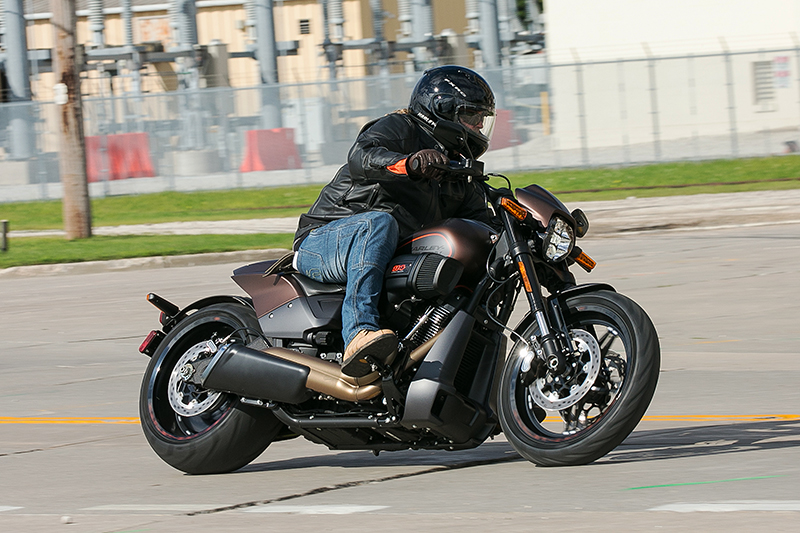
The only other all-new model in Harley’s 2019 lineup is the FXDR 114, a drag-inspired Softail with a 240mm backside. The dearth of new models isn’t surprising given Harley’s announcement last July that it will launch the Pan America adventure tourer, Streetfighter and Custom starting in 2020, all powered by a new engine platform.
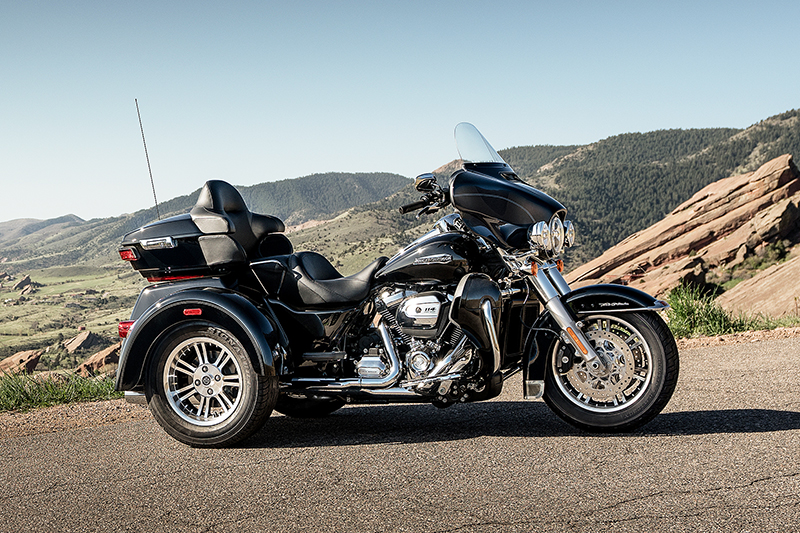
Among existing models, the Tri Glide Ultra and Freewheeler trikes get the most significant changes for 2019. Stepping up from the Milwaukee-Eight 107 to the 114 will make both livelier at the throttle, and they get the premium Touring suspension made by Showa—a dual bending valve fork and emulsion rear shocks with a remote preload adjuster—which provides good ride control and quality on Touring models we’ve tested. Both trikes are also equipped with an all-new electronic Reflex Linked Brake System, which uses an IMU and multiple sensors to provide proportional linked front and rear braking, ABS, traction control and what Harley-Davidson calls Drag Torque Slip Control to minimize rear wheel slip during abrupt downshifts or deceleration in slippery conditions. The new system also measures and adjusts for lateral (cornering) acceleration since the amount of brake pressure required to limit wheel slip (or lock) when cornering is less than what is needed in a straight line. Although the benefit of cornering ABS on a non-leaning trike may be somewhat limited, we’re likely to see this technology migrate to Touring, Softail and other two-wheelers where it helps lower the risk of tip-overs in emergency situations.
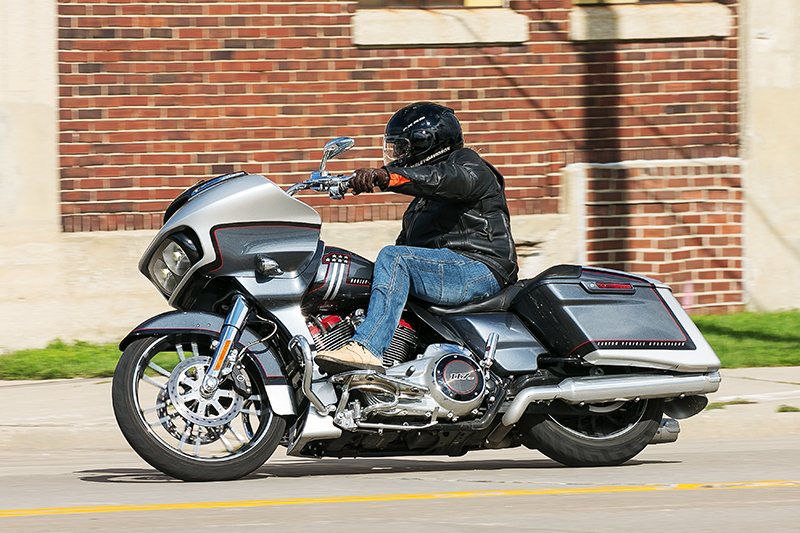
Buyers of Harley’s cream of the crop Custom Vehicle Operations models continue to get exclusive access to Milwaukee-Eight 117, the largest production engine offered. The 117 comes with a high-performance camshaft and intake too, factors that attribute to the lofty 125 lb-ft of torque (claimed). Each year Harley uses the CVO platform to launch a new line of parts and accessories, and this year’s ensemble is called the Kahuna Collection and includes shifter pegs, brake pedal cover, muffler end caps, heated grips and rider and passenger floorboards. Premium paint and head-turner wheels are a trademark of CVOs, and 2019 is no exception. The 2019 CVO Road Glide sports a 21-inch Knockout front wheel, making it the only tourer coming out of the factory with such a large front hoop. Harley also tweaked the internals on the CVO Road Glide’s fork, and after spending time in its saddle at the press launch, I can attest that handling hasn’t been sacrificed for style.
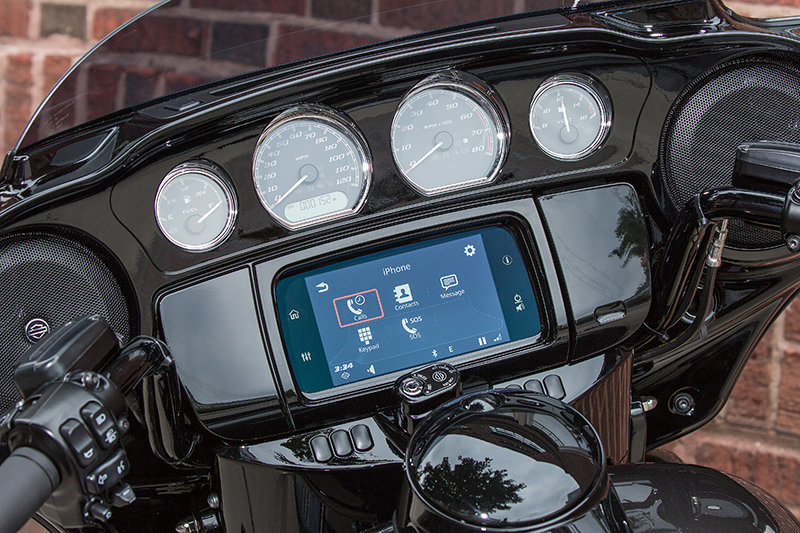
Harley-Davidson ratcheted things up in the infotainment arms race with the new Boom! Box GTS, which boots up faster, is easier to see in bright sunlight, provides more intuitive, smartphone-like functionality and does quicker navigation routing. Thanks to a faster processor and more memory, boot-up time is said to be reduced from 21 to 10 seconds and route calculation has been reduced from 10 seconds to 2.5. The 6.5-inch screen features Corning Gorilla Glass, the same tough glass used on most mobile devices, and it has a surface treatment that minimizes sun glare. Similar to a smartphone or tablet, you can swipe, pinch and drag objects on the screen, and Apple CarPlay projects iPhone functions onto the 6.5-inch screen. Additionally, the new system can be operated using Harley’s wireless headset through a Bluetooth connection, but unless you buy a CVO, the headset is sold separately. The Boom! Box GTS comes standard on 2019 Ultra Limited, Ultra Limited Low, Road Glide Ultra, Road Glide Special, Street Glide Special, CVO Limited, CVO Street Glide, CVO Road Glide and Tri Glide Ultra models and is a factory-installed option for the Street Glide, Road Glide and Electra Glide Ultra Classic.
Also new for 2019 is a new accessory, the 7-inch Daymaker Adaptive LED headlight. Sensors and electronics integrated in the headlight determine lean angle of the motorcycle and project additional light into corners to illuminate areas of the road fixed headlights don’t reach.
From the forthcoming LiveWire to the IMU-based Reflex Linked Brake System, Boom! Box GTS and adaptive headlight, the 115-year-old The Motor Company is clearly embracing the latest in technology.


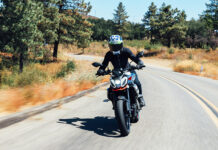

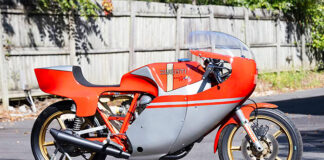



Finally Harley will build Naked Bikes for the modern commuter which can be used for some fun in the twisties and at the track.
Having owned, ridden, maintained and sold motorcycles over a span of 58 years; coming from both an aerospace engineering background together with being a motor sports enthusiast: things are not looking great for the industry!
Too much traffic, impaired drivers, the introduction of autonomous (self driving cars), the current state of the economy and lack of any interest by the Millenials~ who don’t show any interest in personal transportation, ie. Cars, motorcycles, RV’s, boats, etc. . . . The rate of decline in sales,
and public interest and participation would lead one to “run kicking and screaming” from this market and invest in software stocks or perhaps Amazon?
If all the major “players”: Harley, Honda, Yamaha, Suzuki, Kawasaki, Triumph, BMW, Royal Enfield . . . etc would cease building any motor cycles for the foreseable future; there are sufficient numbers of them remaining in the used market to suffice the needs for the next 20 years!
Take a look at Craigslist for any state, town or city and look at the number of machines out there? It’s unbelievable!!!
I hate to say this, but I think the motorsports industry is going to shrink dramatically over the coming years! Going the way of Greneral Aviation, buggy whips and horse shoes?